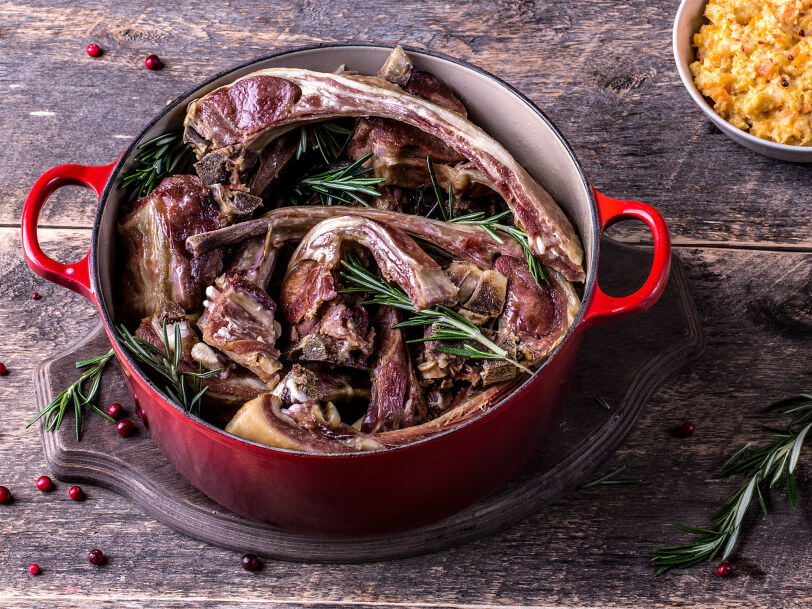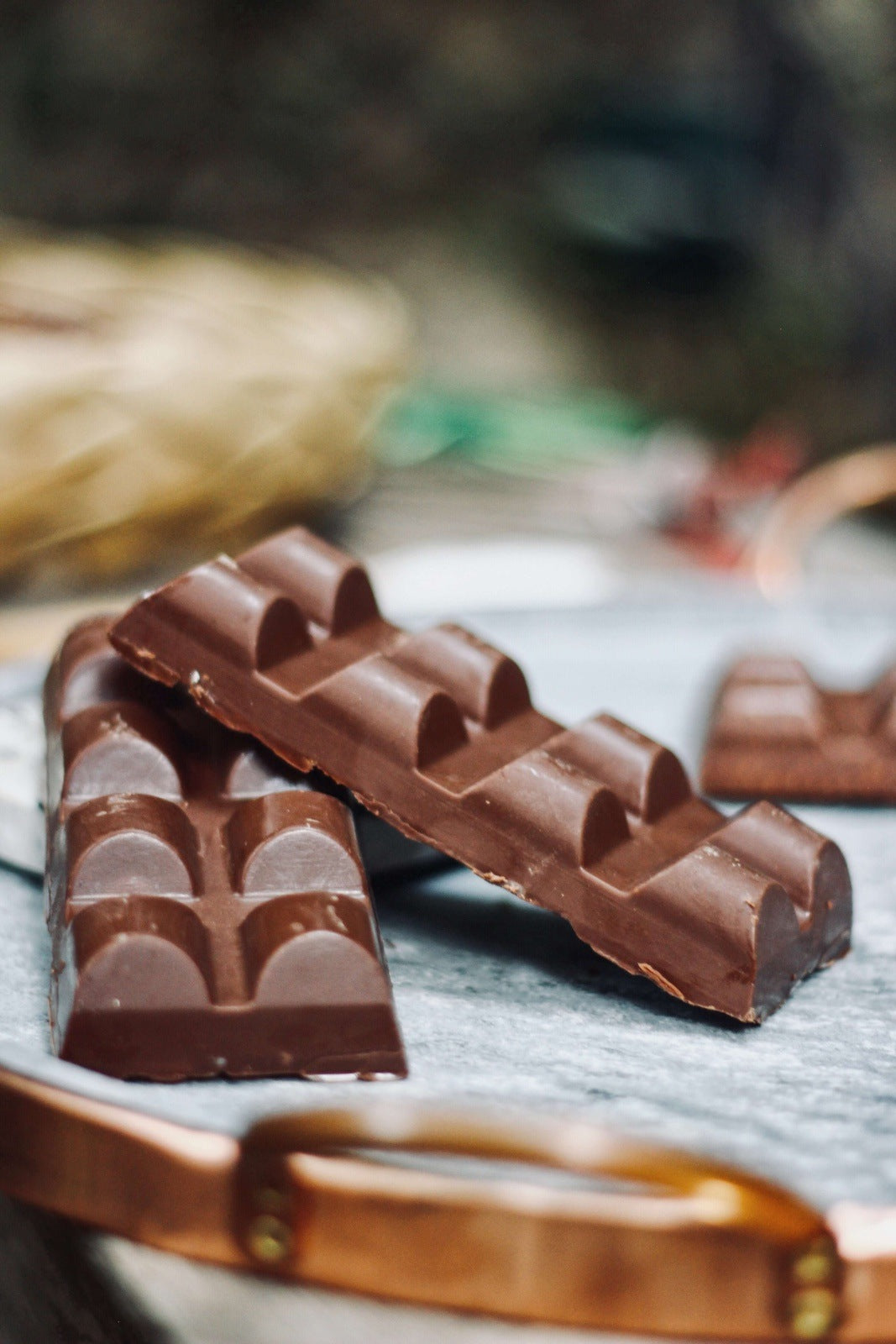
Pinnekjøtt
Share
Pinnekjøtt - or lamb ribs - are the most common Christmas food in Western Norway, and have taken up the competition as the most popular Christmas food throughout the country. The unique taste comes from the old preservation methods of salting and drying. And you, should you have really juicy chops, use the memory rule 30-3. That is, 30 hours of dilution and 3 hours of steaming. This is the rule that will give a juicy and good result no matter what.
Did you know that pinnekjøtt is also called julesteik, ribbesteik, pinnesteik, smaleribbe, fåreribbe, damparibbe and saueribbe? Like we say i Norwegian; "A Dear child has many names", but the starting point for this popular Christmas dinner is the same regardless of name: salted and dried ribs of sheep or lamb, sometimes also smoked.
The name "pinnekjøtt" comes from the cooking method that traditionally has been to steam the meat on wooden sticks (birch). In Norway, about a third of the population eat pinnekjøtt on Christmas Eve, which makes it in second place after the rib of pigs. More and more eat it on Christmas Eve, and many have it on the menu during Christmas, New Year's Eve, or even in easter.
The dish has its roots in the old Norwegian community where salted and dried meat was an important part of the diet. The beef meat originates in areas with large sausages, especially in western Norway, but also in northern Norway and some eastern country villages. Status as a party and Christmas food is due to the fact that the meat has high fat content and was therefore attractive. When the sheeps ribs were salted and dried, and did not eat freshly as swine ribs, it was a consequence of natural feed and feed time. In recent years, several have embarked on new ways of preparing the meat, ranging from steam on a steel grating to cook the meat directly into broth.
Cooking
Traditionally, the preparation of pinnekjøtt began with fresh sides being placed in brine for a couple of weeks, alternatively they could also be dry salted for a short period of time. Then they were hung up to dry in a dry, airy and cool place for 6-8 weeks, and preferably longer. In some places you also smoked the pinnekjøtt. When it was dry, they were hung up in the stabburet. In the dried state, the ribs could last well for a long time.
The day before cooking, the sheep's side was cut up along the ribs and placed in cold water, usually overnight. The diluted ribs were steamed in a pan on a grid of birch pines both with and without bark . That way, it should be slowly lighted under cover until it was tender for 3-5 hours.
Although the process of salting and drying today is industrialized, the principles are still the same, and you can buy both whole sides and pre-cut ribs. One uses a mixture of coarse and fine salt and rubs the sides with salt by hand. This in order for the outer muscle cells to break and the salt needs to penetrate quickly. Then the meat are stored for about eight days. Then the sides are flushed well with water and hang for drying.
The chemistry behind pinnekjøtt
The salting of the pinnekjøtt binds to water and draws it out of the meat, as does air drying. This makes the meat more durable than it originally was. Smoked pinnekjøtt can get a lot of chemicals through the smoke, including antioxidants and nitrogen compounds that prevent botulism-causing bacteria to bloom.
The pinnekjøtt that is only salted and dried is brown while smoked pinnekjøtt is burgundy is due to the fact that smoking reduces the protein myoglobin to nitrosomyoglobin which has the characteristic reddish color, while myoglobin exposed to air turns into methyoglobin that is brown.
How To Prepare your pinnekjøtt
YOU NEED: Pinnekjøtt, kohlrabi, carrots, potatos, salt, pepper, double cream, butter, Vossakorv or other coarse sausage, water and birch sticks
Calculate approx. 400 g of pinnekjøtt per person. Water out the pinnekjøtt in plenty of water for approx. 30 hours. Leave it at room temperature.
When the meat is diluted, it regains its natural fluid balance and the amount of salt is reduced. The dilution time varies slightly depending on how much the meat has been dried, the thickness of the pieces of meat and the temperature of the water. Warm water provides faster dilution.
Place a metal grate or birch sticks without bark in the bottom of a wide pot. Fill with water so that it is level with the grate. Place the chops on top and put on the lid. Bring to the boil, lower the heat and let the chops simmer / simmer at 85-95 degrees approx. 3 hours, or until the meat detaches from the bones. Make sure it does not boil dry, top up with more water if necessary. Pieces of Vossakorv can be steamed together with the chops for the last 15 minutes.
Peel a squash, grate it and squeeze the juice. Divide them into coarse pieces and cook them tender in lightly salted water. Pour off the boiling water and mash the vegetables.
Add butter and cream. Season with salt and pepper, and possibly a little grated nutmeg.
Delicious freshly steamed pinnekjøtt, Vossakorv and rotmos ready to serve. Serve with boiled almond potatoes and the stew from the chops.
If desired, the chops can be lightly browned in the oven. Place the chops on a rack over a long pan. Put it high in the oven on high heat or under the grill for approx. 5 minutes. Pay close attention to the meat.
Emergency solution
A classic mistake in the Christmas stress is to forget to water out the pinnekjøtt. If you do not have the opportunity to change plans and serve the pinnekjøtt a day later, there is an emergency solution. Put the chops in a saucepan and fill it with cold water. Heat slowly to boiling point and let it soak until the meat releases the bones. This is not the ideal way to do it. With this solution, it is wise to prepare extra drinks, as it will taste a little saltier than usual.

